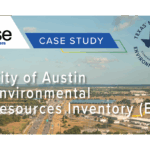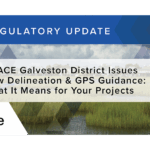
In today’s fast-paced business environment, the importance of environmental compliance cannot be overstated. As companies strive to meet regulatory requirements and minimize their ecological footprint, environmental compliance auditing plays a critical role in ensuring that businesses adhere to environmental laws and regulations. By conducting comprehensive assessments and evaluations, businesses can identify areas of improvement, implement corrective actions, and demonstrate their commitment to environmental sustainability. This article explores the concept of environmental compliance auditing, its key elements, its role in business, steps involved in conducting an audit, challenges faced, and future trends shaping the field.
Understanding the Concept of Environmental Compliance Auditing
As a core component of environmental management systems, environmental compliance auditing involves assessing an organization’s activities, processes, and impacts to ensure compliance with applicable environmental laws, regulations, and standards. It serves as a proactive measure to identify non-compliance, mitigate risks, and improve environmental performance.
Definition and Importance of Environmental Compliance Auditing
Environmental compliance auditing is the systematic and independent examination of an organization’s environmental practices, procedures, and records against established standards. Its primary goal is to determine the extent of compliance, identify deficiencies, and recommend corrective actions. By promoting adherence to regulations, environmental compliance auditing safeguards the environment, protects public health, and enhances the reputation of businesses.
Key Elements of Environmental Compliance Auditing
To ensure effectiveness, environmental compliance auditing encompasses several key elements:
- Legal requirements: Auditors assess whether the organization complies with federal, state, and local environmental laws, regulations, and permits relevant to its operations.
- Permits and licenses: Auditors review the organization’s permits and licenses to verify compliance with conditions, such as emission limits, waste management, and reporting obligations.
- Operational procedures: Auditors examine the organization’s processes, procedures, and controls to ensure compliance with environmental standards and best practices.
- Environmental management systems: Auditors evaluate the effectiveness of the organization’s environmental management systems, including policy development, planning, implementation, and performance monitoring.
- Documentation and recordkeeping: Auditors assess the organization’s documentation and recordkeeping practices to ensure accurate and complete reporting of environmental activities.
Environmental compliance auditing is a comprehensive process that requires auditors to have a deep understanding of environmental regulations and industry-specific standards. They must possess the knowledge and expertise to assess the organization’s compliance status accurately and provide valuable recommendations for improvement.
During an environmental compliance audit, auditors conduct site visits, interviews with key personnel, and thorough document reviews. They meticulously examine the organization’s environmental practices, including waste management, pollution prevention measures, and energy consumption. This detailed examination helps identify areas of non-compliance and potential environmental risks.
Once the audit is complete, auditors prepare a detailed report that outlines their findings, including any non-compliance issues and recommendations for corrective actions. This report serves as a valuable tool for organizations to prioritize and address environmental compliance gaps, ensuring that they meet legal requirements and minimize their environmental footprint.
Furthermore, environmental compliance auditing goes beyond mere regulatory compliance. It helps organizations enhance their environmental performance by identifying opportunities for improvement and implementing sustainable practices. By integrating environmental considerations into their operations, organizations can reduce resource consumption, minimize waste generation, and contribute to a more sustainable future.
The Role of Environmental Compliance Auditing in Business
Environmental compliance auditing serves as a cornerstone for businesses striving to maintain both legal compliance and environmental sustainability.
Ensuring Regulatory Compliance
Complying with environmental regulations is not only a legal obligation but also a key factor in maintaining public trust and avoiding costly penalties or lawsuits. Environmental compliance auditing enables businesses to identify areas where they may be falling short of regulatory requirements and take corrective action promptly.
Minimizing Environmental Impact
Environmental compliance auditing also plays a vital role in ensuring that businesses minimize their environmental impact. Through audits, organizations can identify opportunities for resource optimization, waste reduction, and pollution prevention. By implementing initiatives based on audit findings, businesses can enhance operational efficiency and reduce their ecological footprint.
Steps in Conducting an Environmental Compliance Audit
Conducting an environmental compliance audit requires careful planning, systematic execution, and robust post-audit activities.
Pre-Audit Planning and Preparation
Prior to conducting an environmental compliance audit, organizations should establish clear objectives, scope, and criteria for the audit. A well-defined audit plan should outline the specific areas, processes, and operations to be assessed. It is crucial to assemble a competent audit team and allocate resources for data collection, review, and analysis.
Conducting the Audit: Key Processes and Procedures
The audit process involves on-site inspections, data collection, interviews with key personnel, and review of relevant documentation. Auditors should adhere to a structured approach, following established protocols and methodologies. They should evaluate compliance with legal requirements, operational procedures, and environmental management practices. Throughout the audit, open communication with the audited organization is essential to ensure accurate information exchange.
Post-Audit Activities: Reporting and Follow-up
After completing the audit, the auditor prepares a detailed report highlighting findings, non-compliance areas, and recommendations for improvement. The report should be clear, concise, and actionable. It should include prioritized corrective actions, timelines, and responsible parties. Management’s commitment to addressing audit findings is crucial to ensuring that recommended actions are implemented effectively. Regular follow-up and monitoring are essential to track progress and assess the impact of corrective measures.
Challenges in Environmental Compliance Auditing
Environmental compliance auditing presents various challenges that organizations must overcome to ensure successful audits.
Common Obstacles in Conducting Audits
Auditors may face challenges such as incomplete or inaccurate recordkeeping, limited access to information, resistance from employees or management, or inadequate resources for conducting thorough audits.
Strategies to Overcome Audit Challenges
To overcome audit challenges, organizations should foster a culture of transparency and cooperation. They should have robust recordkeeping systems in place and ensure that employees understand the importance of accurate and timely reporting. Providing adequate training and resources to auditors is crucial to enhancing audit quality and effectiveness.
Future Trends in Environmental Compliance Auditing
As the field of environmental compliance auditing continues to evolve, several trends are shaping its future.
Technological Innovations in Auditing
Advancements in technology, such as data analytics, remote sensing, and artificial intelligence, are revolutionizing environmental compliance auditing. These technologies assist auditors by automating data collection, analysis, and reporting processes, enabling more efficient and accurate audits.
Evolving Regulatory Landscape and Its Impact on Auditing
The regulatory landscape is continuously evolving to address emerging environmental challenges. Auditors must stay updated on changing regulations and adapt audit processes to align with new requirements. The integration of sustainability principles and climate-related risks into auditing practices is becoming increasingly important.
In conclusion, environmental compliance auditing plays a crucial role in ensuring that businesses meet regulatory requirements and minimize their environmental impact. By conducting audits, organizations can identify non-compliance areas, implement corrective actions, and improve their environmental performance. Although challenges exist, strategies can be employed to overcome them. Moreover, technological innovations and evolving regulatory frameworks are shaping the future of environmental compliance auditing, making it more efficient and comprehensive than ever before. By embracing proactive environmental compliance auditing, businesses can demonstrate their commitment to sustainable practices and contribute to a greener future.
As you navigate the complexities of environmental compliance and strive for sustainable business practices, remember that expert guidance is just a click away. ESE Partners is dedicated to helping you tackle the multifaceted environmental challenges your business faces. With our extensive experience in environmental auditing, assessment, remediation, and compliance, we are equipped to provide you with innovative solutions that not only meet regulatory demands but also enhance your company’s environmental stewardship. Don’t let environmental compliance be a roadblock to your success. Request A Proposal today and partner with us to responsibly move your business forward.








